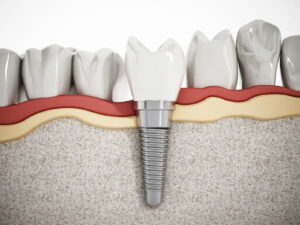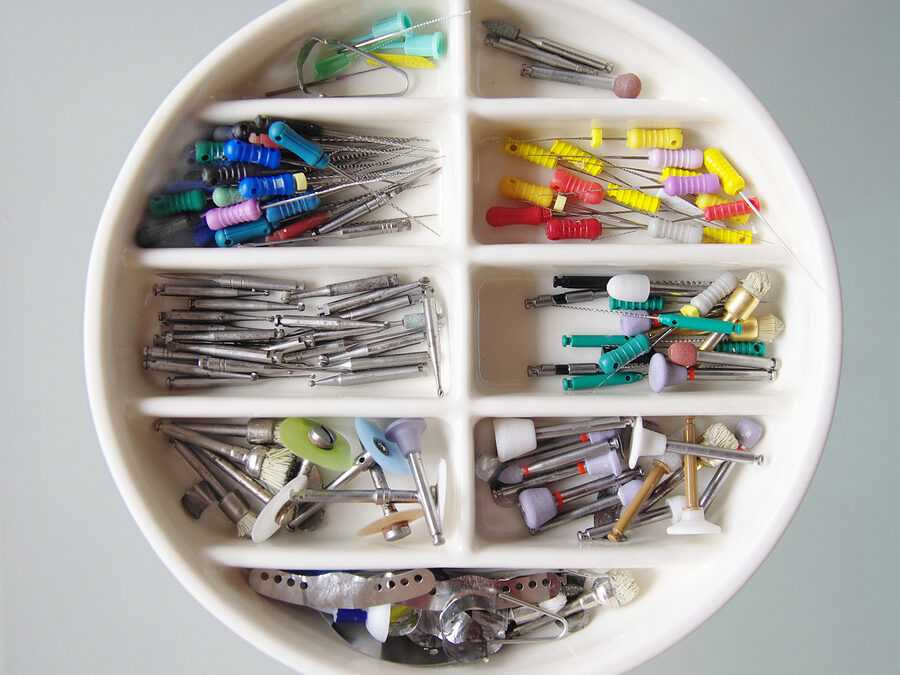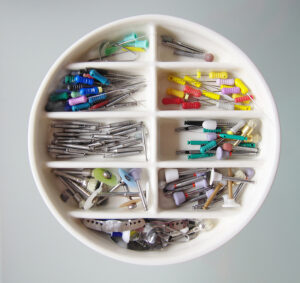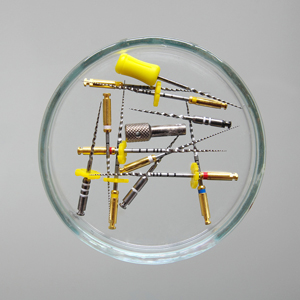
by Dr. Jacqueline S. Allen | Sep 14, 2016 | Blog, Cracked Teeth, Endodontics
 Tooth pain is almost always a signal that something is wrong inside your mouth and that you need to see a dentist immediately. The last thing you want to worry about in this situation is what day of the week it is.
Tooth pain is almost always a signal that something is wrong inside your mouth and that you need to see a dentist immediately. The last thing you want to worry about in this situation is what day of the week it is.
Specialists with the Phoenix Endodontic Group, like many other Scottsdale endodontists, are able to see emergency cases on the weekend. However, what if you’re in pain, but not sure if it’s bad enough for you to see your Scottsdale endodontist? Here is a quick guide for assessing your weekend dental emergency and determining the best course of action to resolve it.
Weekend Dental Emergency Guide
- When to call 911. Some conditions mandate immediate medical care, including jaw fractures, jaw dislocations, lacerations of the soft tissues of the mouth and face, or an abscessed or infected tooth that is severely swollen and/or impacting one’s breathing or swallowing. The emergency room staff can stabilize your condition, so that your Scottsdale endodontist can then safely provide treatment to preserve your teeth.
- When to call your Scottsdale endodontist. If you’re not experiencing symptoms that are life-threatening, it’s appropriate to call your dentist or endodontist and request to be seen immediately. Cases of cracked and knocked-out teeth fall in this category. If you have badly decaying teeth and are experiencing symptoms of dental infection, you may need an emergency root canal treatment. Don’t hesitate to ask for weekend treatment – in these cases, you will be preventing a potential trip to the ER, not to mention reducing your pain.
- When to practice self-care at home. If your dental pain is very mild, you may choose to apply some self-care techniques over the weekend and call your Scottsdale endodontist on Monday. Avoid extremely hot or cold foods and beverages, take over-the-counter pain relievers for your toothache and gargle with warm salt water to keep the area clean. If your symptoms get worse, don’t hesitate to make a weekend appointment to address the situation.
“Your treatment for your dental emergency should be predicated on what symptoms you have, not the date on the calendar, says Dr. Allen of the Phoenix Endodontic Group. “Our practice, or that of any Scottsdale endodontist, will be happy to see you get care during a weekend dental emergency situation.”

by Dr. Jacqueline S. Allen | Aug 2, 2016 | Blog, Endodontics
 The goal of endodontic treatment is to save the natural tooth for a lifetime. However, there are instances in which a dentist or specialist may decide that a tooth cannot be saved and, therefore, render it “non-restorable.” These teeth may also be called “non-retainable” because they cannot be retained in the mouth for any significant, predictable period of time.
The goal of endodontic treatment is to save the natural tooth for a lifetime. However, there are instances in which a dentist or specialist may decide that a tooth cannot be saved and, therefore, render it “non-restorable.” These teeth may also be called “non-retainable” because they cannot be retained in the mouth for any significant, predictable period of time.
Here are a few reasons why a tooth may be considered non-restorable:
- Extensive decay or destruction of the natural tooth structure—this scenario prevents a dentist from adequately restoring the tooth, leaving it susceptible to further decay, pain, and possible infection.
- Advanced periodontal issues—if periodontal issues are not controlled, this predisposes the teeth to recession, bone loss, and eventual loss of the tooth.
- Resorption is a dental process that occurs when the cells that surround the tooth begin to eat away at it, which is is typically due to some form of trauma.
- Iatrogenic causes can occur; these are typically induced inadvertently by a medical or dental professional during treatment or diagnosis. For example; some teeth can have root canal systems that are very calcified or small, and during the search for these, a hole (or “perforation”) can be created by the dental drill or instruments. If these perforations are not addressed and repaired in a timely fashion, or if the size of the perforation is too large to repair, the overall health of the tooth will be compromised in the long run.
- A crown-to-root ratio that is less than one to one is not ideal. In other words, the remaining tooth that is encapsulated in bone should be at least the same amount that is outside the bone. Torqueing forces that are exerted on the tooth are an unstable environment for any tooth, especially one that is already compromised.
- Certain types of trauma can lead to early tooth loss. For instance, if a tooth is avulsed, or “knocked out,” and is not put back into the socket within one hour (depending on stage of root development), the overall prognosis for retaining that tooth is poor, and the tooth will eventually be non-retainable.
- Vertical root fractures will inevitably doom a tooth to failure. A root that has a fracture extending vertically, especially if it communicates with the oral cavity, has a hopeless prognosis and is considered non-retainable.
Like with any dental procedure, it is the obligation of the treating dental professional to present his or her patient with dental treatment options, along with the likelihood of success associated with those options. Our duty as endodontists is to provide our patients with all of the necessary information about their oral health, their treatment, and the projected outcomes of those treatments so that they can make an informed decision that is best for them.

by Dr. Jacqueline S. Allen | Jul 25, 2016 | Blog, Dental Implants, Endodontics
 When you’re experiencing pain from a damaged or infected tooth, you typically have one top priority: to feel better quickly. Your dental team will likely recommend one of two treatment pathways for you at this point. You will either have to undergo a root canal treatment to save your natural tooth, or if your natural tooth is too damaged to save, you may have to get a tooth extraction and a dental implant.
When you’re experiencing pain from a damaged or infected tooth, you typically have one top priority: to feel better quickly. Your dental team will likely recommend one of two treatment pathways for you at this point. You will either have to undergo a root canal treatment to save your natural tooth, or if your natural tooth is too damaged to save, you may have to get a tooth extraction and a dental implant.
Dental implants represent one part of a treatment spectrum that endodontists are qualified to perform, and root canals are located at the other end of this spectrum. Because patients frequently want to retain their natural teeth and associate endodontists only with root canals, it’s useful to review how dental implants fit into the endodontic treatment picture.
Dental Implants in Endodontic Treatment
- Implants are artificial devices that substitute for individual human teeth. A dental implant has three parts: a fixture, which acts as an artificial tooth root; an abutment, which supports and secures the dental work place on top of it; and a restoration, a crown or other dental prosthesis that “stands in” for the extracted natural tooth.
- Many factors come into play when choosing between a dental implant and root canal treatment. This is a decision that must be made on a case-by-case basis. A patient’s overall health, the health of his or her gums and jawbone, how many other natural teeth the patient currently has (and what shape they are in), and how many treatment “steps” a successful outcome would require are all important aspects that must be taken into account. While both treatments have a high overall success rate (greater than 90 percent), selecting the wrong treatment for a patient can lead to another future treatment intervention.
- Dental implants can be installed if a root canal fails and the natural tooth must be extracted, but not vice versa. If it is not immediately clear which treatment choice to make, endodontists and your entire treatment team will take into account the permanence of implants and will proceed with treatment planning and sequencing accordingly.
“Endodontists are familiar with dental implants, and they see them in the perspective of all they know about preserving natural teeth,” says Dr. Jacqueline S. Allen, an endodontist in practice with the Phoenix Endodontic Group. “They are particularly skilled in assessing the best course of treatment for a compromised tooth.”

by fisherwebdesign | Jun 29, 2016 | Blog, Endodontics, Phoenix Endodontic Group, Root Canal, Technology
 Endodontics became a specialty in the early 1960s, but dentists have been performing root canal procedures on patients since the 1800s. Thankfully, the world of root canals has come a long way since the turn of the 19th century.
Endodontics became a specialty in the early 1960s, but dentists have been performing root canal procedures on patients since the 1800s. Thankfully, the world of root canals has come a long way since the turn of the 19th century.
Implementing a root canal has gotten much easier, and the overall outcome of the procedure itself has improved since the introduction of nickel-titanium files. These files were first introduced in the late 1980s and are made of a unique alloy that is extremely flexible, which helps to preserve the original anatomy of the root canal. This, in turn, results in better efficiency, predictability, and improved clinical results of endodontic treatment, especially in significantly curved canals.
Digital radiography is another handy tool that we use as endodontists. Originally introduced in the 1990s, it has certainly revolutionized the field of endodontics, as well as the entire dental community, by allowing the dentist to manipulate an image and provide a much higher overall diagnostic quality. Thankfully, it does this with much less radiation than was needed to capture a standard radiographic dental film in the past.
In addition to digital radiography, the operating microscope is relatively new in the endodontic world. Magnification and fiber optic illumination are helpful in aiding the endodontist by allowing him or her to see very small details inside the teeth that that need work. Also, a tiny video camera on the operating microscope can record images of a patient’s tooth to further document the doctor’s findings.
Finally, three-dimensional radiographs (cone-beam commuted tomography) allows endodontists to help diagnose potential issues more accurately and provide treatment with unprecedented confidence. Unlike a traditional spiral CT scanner, this 3D system provides precise, crystal-clear digital images while minimizing the patient’s exposure to radiation. This system allows for unmatched visualization of anatomical detail, which aids in diagnosis, treatment planning, and the actual root canal treatment. Your doctors can use this innovative technology to quickly and easily share 3D images of the area of concern with your referring doctor, giving them an opportunity to collaborate on your care, improve your experience, and deliver a positive treatment outcome.
Although there are many other advancements in endodontics on the horizon (stem-cell regeneration of the root canal system, as well as reconstructing the teeth themselves), the current ones allow for much better diagnosis, treatment planning, and pain-free root canals than ever before.

by Dr. Jacqueline S. Allen | Jun 28, 2016 | Blog, Endodontics, Patients, Phoenix Endodontic Group
 Phoenix Endodontic Group has been using an online patient referral system since 2005. That’s right – for the last 11 years, we have offered our referring dentists the ease and convenience of online referrals and case management for patients sent to our office for endodontic treatment.
Phoenix Endodontic Group has been using an online patient referral system since 2005. That’s right – for the last 11 years, we have offered our referring dentists the ease and convenience of online referrals and case management for patients sent to our office for endodontic treatment.
Back in 2005, online referrals were a difficult concept for Phoenix dentists to come around to. The old pen-and-paper method worked just fine before, but the explosive use of technology, along with tighter HIPPA requirements has made utilizing an online referral system a “must” for dental offices in Phoenix. “The rest of the world has finally caught up with our capabilities,” said Kevin G. Conroy, Operations Manager at Phoenix Endodontic Group.
Simply put, from the start of the referral process to the end, when a final report is generated, Phoenix Endodontic Group’s TDO software handles the communication between offices seamlessly. The referring office has its unique sign in to a HIPPA Compliant web portal to exchange patient information directly with our office. There is no need for secure emails because no patient information is sent via email.
Enhancements to this system are ongoing, and there are many benefits for the Phoenix dentist office that uses our referral system:
- Saves time — a referral can be made before the patient leaves the general dentist’s office – there are no hold time or delays.
- Convenience — no more looking for paper referral slips, which sometimes get misplaced by patients prior to making an appointment.
- Accuracy — not all doctors have the best handwriting, so typing in the specifics of a referred case makes misinterpretation less likely.
- HIPPA Compliant — using online referrals eliminates the risk of a potential privacy violation.
The 21st century has changed the way we all conduct business. At Phoenix Endodontic Group, we are always interested in utilizing best practices for our referring offices and patients alike.

by Dr. Jacqueline S. Allen | Jun 14, 2016 | Blog, Endodontics, Endodontist, Root Canal
 Despite a recent increase in awareness of the role of endodontists, root canal therapy is still feared by more than half (54%) of all Americans, according to a 2014 survey. This is truly unfortunate because the procedure has great potential to improve a dental patient’s oral health and well-being.
Despite a recent increase in awareness of the role of endodontists, root canal therapy is still feared by more than half (54%) of all Americans, according to a 2014 survey. This is truly unfortunate because the procedure has great potential to improve a dental patient’s oral health and well-being.
Here are just a few benefits that a patient can receive when he or she undergoes root canal therapy.
Benefits of Root Canal Therapy
- Reduces or eliminates pain from a toothache. Root canals can often successfully treat tooth pain symptoms, as well as symptoms related to infected tooth pulp, such as tenderness, foul smell or taste, and swelling in the gum and jaw tissue surrounding a tooth.
- Saves your natural tooth. A root canal removes and replaces the damaged and infected pulp from the inside of your tooth and allows it to function normally after a restoration is placed on the tooth.
- Improves the appearance of your tooth. A custom-made crown is often placed over the treated tooth. This can improve the appearance of a tooth that’s been cracked or infected.
- It’s a simple, relatively quick procedure. Root canal therapy typically only involves one or two appointments, including the installment of the final restoration.
- It allows you to speak, chew and eat normally. By removing the source of pain and protecting the natural tooth structure, a root canal allows you to keep using your tooth the way nature intended you to.
- Reduces the need for future dental work. By stabilizing the tooth and removing dangerous infections, root canals can prevent the need for tooth extractions, dental implants, and dentures. Many teeth that receive root canal therapy will last for the rest of a patient’s life.
“Get beyond the myths – a root canal is one of the best methods for preserving your natural teeth and enhancing your oral health,” says Dr. Jacqueline S. Allen, an endodontist who is a member of the Phoenix Endodontic Group.

 Tooth pain is almost always a signal that something is wrong inside your mouth and that you need to see a dentist immediately. The last thing you want to worry about in this situation is what day of the week it is.
Tooth pain is almost always a signal that something is wrong inside your mouth and that you need to see a dentist immediately. The last thing you want to worry about in this situation is what day of the week it is.

 The goal of endodontic treatment is to save the natural tooth for a lifetime. However, there are instances in which a dentist or specialist may decide that a tooth cannot be saved and, therefore, render it “non-restorable.” These teeth may also be called “non-retainable” because they cannot be retained in the mouth for any significant, predictable period of time.
The goal of endodontic treatment is to save the natural tooth for a lifetime. However, there are instances in which a dentist or specialist may decide that a tooth cannot be saved and, therefore, render it “non-restorable.” These teeth may also be called “non-retainable” because they cannot be retained in the mouth for any significant, predictable period of time.
 When you’re experiencing pain from a damaged or infected tooth, you typically have one top priority: to feel better quickly. Your dental team will likely recommend one of two treatment pathways for you at this point. You will either have to undergo a root canal treatment to save your natural tooth, or if your natural tooth is too damaged to save, you may have to get a tooth extraction and a dental implant.
When you’re experiencing pain from a damaged or infected tooth, you typically have one top priority: to feel better quickly. Your dental team will likely recommend one of two treatment pathways for you at this point. You will either have to undergo a root canal treatment to save your natural tooth, or if your natural tooth is too damaged to save, you may have to get a tooth extraction and a dental implant.
 Endodontics became a specialty in the early 1960s, but dentists have been performing root canal procedures on patients since the 1800s. Thankfully, the world of root canals has come a long way since the turn of the 19th century.
Endodontics became a specialty in the early 1960s, but dentists have been performing root canal procedures on patients since the 1800s. Thankfully, the world of root canals has come a long way since the turn of the 19th century.
 Phoenix Endodontic Group has been using an online patient referral system since 2005. That’s right – for the last 11 years, we have offered our referring dentists the ease and convenience of online referrals and case management for patients sent to our office for endodontic treatment.
Phoenix Endodontic Group has been using an online patient referral system since 2005. That’s right – for the last 11 years, we have offered our referring dentists the ease and convenience of online referrals and case management for patients sent to our office for endodontic treatment.